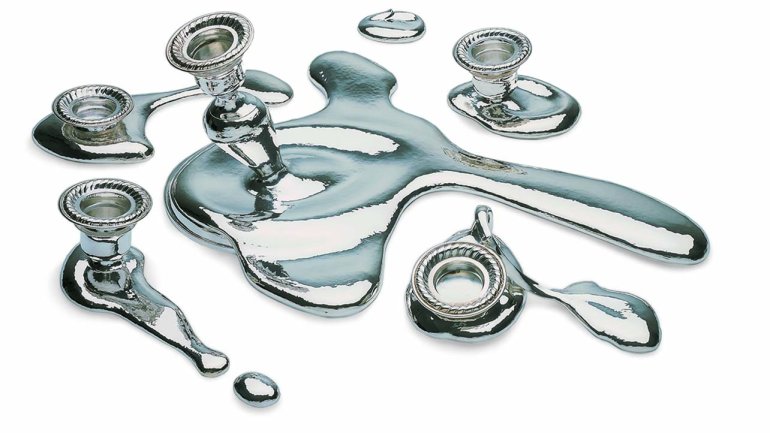Masters: Myra Mimlitsch-Gray
Masters: Myra Mimlitsch-Gray
Myra Mimlitsch-Gray is well equipped and well trained. But of all of her tools, her ability to learn may be the most powerful. What has been most influential in the 30-year career of the upstate New York metalsmith is her willingness to embrace the ambiguity – the awkwardness, the anxiety, the reach into the unknown – that accompanies learning. Again and again, she has channeled that uncertainty into new, potent bodies of work.
Mimlitsch-Gray learned metalsmithing in high school and college, focusing on jewelry. It was a revelation. “I knew that I had discovered a passion for this material,” she says, “and that it was never going to leave me.”
Early on, though, while holding fast to her material passion, she changed her output. Urged on by professors who saw her considering the road less taken, she shifted to making hollowware. She became entranced by the social, functional connotations of trays, vessels, and other objects. “I am really motivated by metalsmithing and the objects that I associate with that,” she says – “objects for the table; objects of utilitarian function; ceremonial objects; things that might occupy the table, the sideboard, the mantel.”
In 2007, she engaged in another shift – this one way outside her comfort zone. She became an artist in residence at the Kohler Co. in Wisconsin, best known for its porcelain kitchen and bath components and plumbing fixtures; there she cast iron and brass among the factory workers, whose process was “very rigorous, linear, specific, and meticulous,” she says.
It was just the disruption she needed. “I had really run aground,” she says; her mastery of hollowware had become a crutch. “I really needed to find a new way of working, to put myself in the position of a novice.” When she returned to her own studio, she had to reacquaint herself with old techniques – which led to yet another body of work. “I found myself back in my own studio – my own little studio with my own little tools and my own thin little metal.” She began making loops of metal, forming them as if they were fabric, shifting her perspective from table to wall.
Lately, she’s changed her practice again, experimenting with vitreous porcelain enamel on steel. She’s immersed in a new material and a new approach – along with a new openness to serendipity. “I’m learning to celebrate the incidental aspects that come out of the kiln,” she says.
Many artists seek mastery; then, when they arrive at that point, hold on tight. Mimlitsch-Gray searches for ways to be a newbie, a novice, a beginner. “I reach this point of knowing too much,” she says, “and then I need to un-know.”
Day job: When she’s not in the studio, Mimlitsch-Gray directs the metal program at SUNY New Paltz.
From a young age: Mimlitsch-Gray can’t remember a time when she wasn’t making. She remembers poking pins in her dolls’ ears to attach earrings, for example. “The crafts were always in me.”
Sensory joy: When she was about 12, her parents got a house plan from Mother Earth News and set about building an A-frame in the woods of northern Pennsylvania. Her job was straightening nails for reuse. “I enjoyed the repetition of it, the weight of the hammer, the sound of the nails in the can, the accumulated density of that mass of nails.”
The look of function: Her primary gallerist, Sienna Patti, says people often point to a Mimlitsch-Gray work and ask her, “What it is for?” “There’s something inherently present in a metal object that suggests that it’s game for something,” says the metalsmith.
Read more about the 2016 American Craft Council Awards and winners.

